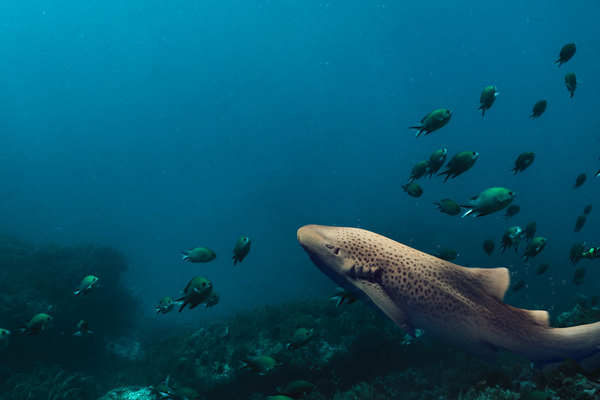Silverfish: poor cousins or a remarkable success story?
Believed to have evolved not long after plants first appeared on land, silverfish have survived to this day and can now be found living in specialised niches unsuitable to most other insects. Not only are we finding many new species and genera throughout Australia but we are also discovering new habitats and evolutionary directions that were never suspected.
Most people only know the species of silverfish they find among their books. But there is a much greater diversity of forms in the Australian environment. My first contact with one of the native species was deep within a cave at Bungonia, NSW. This was a blind, unpigmented animal and not previously known to science. I was encouraged by the late Dr Tony Watson of CSIRO to formally describe the species and almost 40 years later am even more fascinated by these insects.
Almost 50 species of silverfish have been described from Australia (about 8% of the world fauna) but I have collected around 100 undescribed species in the last few years alone.

From top left in a clock-wise direction-the household pest Ctenolepisma longicaudata, a desert dwelling Neoasterolepisma sp. (from Egypt), a cave dwelling Subtrinemura, from Bungonia near Goulburn, an undescribed Ornatilepisma species from central Queensland- a genus previously only known from two specimens collected in Namibia, Xenolepisma sp. - a Lepismatid that has also moved in with ants, an undescribed Acrotelsella from western Victoria and finally a golden Australiatelura species commonly found with ants along the eastern seaboard of Australia.
Image: Graeme Smith & Lee Chow Yang© Australian Museum
There are three broad ecological niches exploited by silverfish. All are basically vegetarian but will eat any other form of protein they find such as dead insects.
The Lepismatidae (scaled and eyed silverfish like the household species) survive by their remarkable speed and agility, escaping the clutches of predators. Even if they are caught by the leg they will simply drop it and grow another one when they next moult. Most important however is their ability to survive in extremely dry conditions by absorbing moisture from subsaturated atmospheres . . . through their anus!
Another group, is eyeless and lacks pigment and has survived by living underground, not just in soil or in caves but we have now found them living in the smallest cracks in almost solid rock tens of metres underground. What do they feed on, how do they find a mate? Every isolated rock outcrop seems to have its own species.
The third group have moved into ant and termite colonies, apparently doing no harm, and tolerated by their hosts probably only because they are far too difficult to catch. These are generally golden in colour and also lack eyes. But in yet another twist to the story, our most recent discovery has shown that some of these species have apparently abandoned their hosted way of life and have taken up a deep subterranean existence in almost solid rock similar to the previous group.
Far from a fairly simple fauna, this work is showing that we have a diverse range of genera, some only known from Australia, others with Gondwanan links to South America and some even with African relatives.
Graeme Smith
Research Associate, Australian Museum Research Institute
More information:
- Smith & McRae (2014). New species of subterranean silverfish (Zygentoma: Nicoletiidae: Atelurinae) from Western Australia’s semi-arid Pilbara region. Records of the Western Australian Museum. 29: 105-127.
- What Bug is that? The guide to Australian insect families. Thysanura (Silverfish).




![[Image of Thelepus japonicus]](https://media.australian.museum/media/dd/images/Fig3_Thelepus_japonicus.87ecdb0.2e16d0ba.fill-600x400.f1c68b5.jpg)







